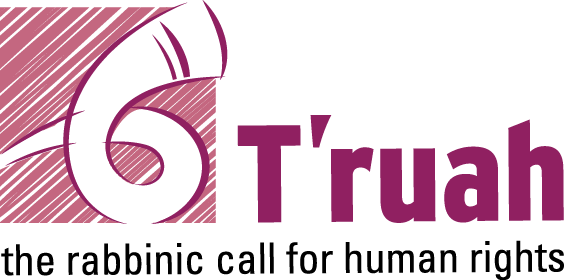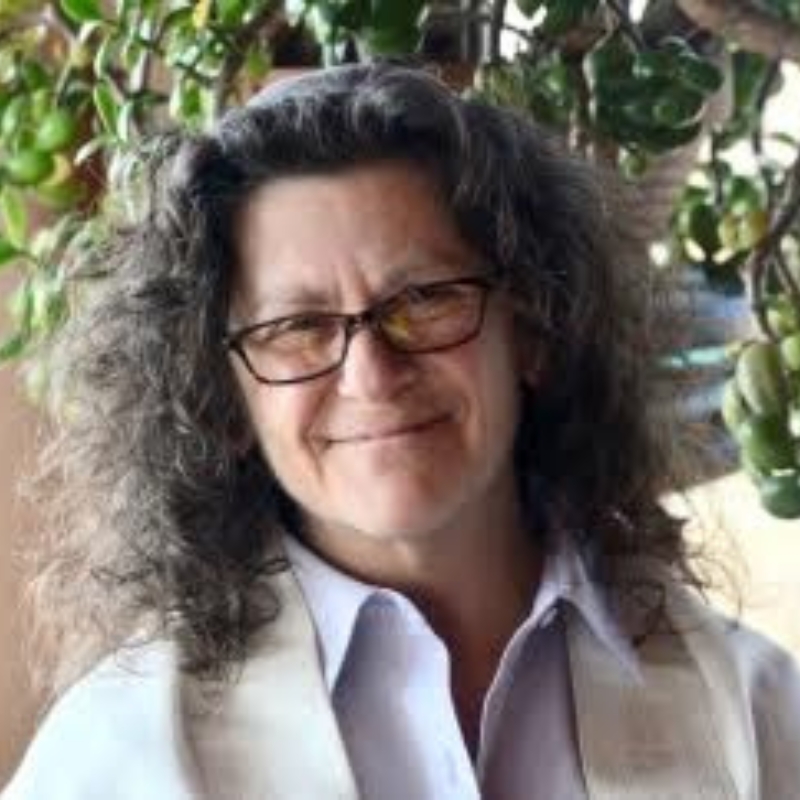Rabbi Shaul Magid explains how Reb Nahman differed from the other Hasids in that he was not satisfied with just discovering God in creation. (“Through the Void: The Absence of God in R. Naḥman of Bratzlav’s Likkutei MoHaRan“) Reb Nahman wanted to find God in the void, in the places where God, seemingly, was not. This teaching resonates for us today. Sometimes it can feel as if God is nowhere to be found. We can easily find our beliefs in opposition to those whom we may view as the epitome of evil, our modern “pharaohs.”
The first three words of this week’s parshah — “come to Pharaoh” (Genesis 10:1) — are God’s challenge to Moses to come and seek God within the absolute center of evil, which is how Moses perceives Pharaoh. It is only within this void of God — and I call it a void because how can God possibly be within that which is evil? — that we can begin to discover the transcendent God, the God beyond, the ein sof (the God “without end”).
Find more commentaries on Bo.
There is a famous Jewish teaching that in order to bring about creation, God had to practice tzimtzum — had to shrink God’s self, because if God is everything, that leaves no room for anything else. It is only after the tzimtzum that God makes the 10 utterances that bring the world into creation. Reb Nahman teaches that we, too, must practice tzimtzum, making ourselves small in order to enter the Divine Void. Only after we shrink can we begin to create again; and for Reb Nahman, our utterances of creation are prayer and Torah study. For us right now, creation is also about reconceiving ourselves in relation to one another — not only those close to us but, importantly, those from whom we feel most distant… those whom we might call “pharaohs.”
How can we come to an understanding of the Divine Void that will enable us to enter into the work of bridging between ourselves and those we perceive as evil? Reb Nahman gives us two paths. The first path is through silence, that is by making ourselves small, entering the Divine Void, and then sitting in silence. As Rabbi Sholom Noach Berezovsky teaches, Egyptian slavery was so soul-crushing that the people couldn’t even speak. (Netivot Shalom: Chag Pesach). The second path is through the primordial scream, such as the scream of our ancestors in Egyptian bondage. In the Torah, we find that redemption only begins when God “hears their cry,” when they can finally cry out. (Exodus 3:9)
Rabbi Zalman Schachter Shalomi, z”l, notes in his translation of Reb Nahman, “There is one tzaddik, a Moses. He must study the void… But Moses, the tongue-tied one, is used to thought that cannot be worded, and he must give thought to the void to save the lost souls. Moses, the humblest of men, knew his full greatness as well as his lowest self.” By sitting in silence, Moses saw not only his deficits but also his potential.
Find more commentaries on our shared humanity.
For those of us feeling as if we only see evil and darkness in the other — those we perceive to be on the “wrong” side in the debates about our society’s greatest problems — it might be helpful to sit a while in the silence of the Divine Void. In the Void, we are invited to join with God to look at our own shmutz, the ways in which we ourselves may contribute to societal evils such as poverty, climate catastrophes, human rights abuses in Israel/Palestine, inadequate and unaffordable health care, and immigration, to name a few. Grappling with our own complicity in some of these problems could be just the impetus for us to seek common ground with those whom we, perhaps all too facilely, label as evil.
Reb Nahman is teaching us that it is only when we are willing to look at what Rabbi Shaul Magid calls “the very fabric of our own emptiness,” that we can meet the face of God. When we are courageous enough to enact this lesson, we can then employ God’s love and compassion; we will see personal growth, especially in our interactions with those whom we need to work to repair this broken world. May we find a new way forward, together, for the old ways are no longer serving us. May we be strengthened by one another to step into the Void and to share our service to the Divine in soulful prayer and brave action in this time of narrowness.
Rabbi Lori Shaller is a spiritual care counselor for Hospice and Palliative Care of Martha’s Vineyard, a spiritual director, and works with unaffiliated Jews worldwide to create meaningful Jewish life cycle rituals with them. She serves on the Board of OHALAH, the professional organization of Jewish Renewal Rabbis and Cantors.

